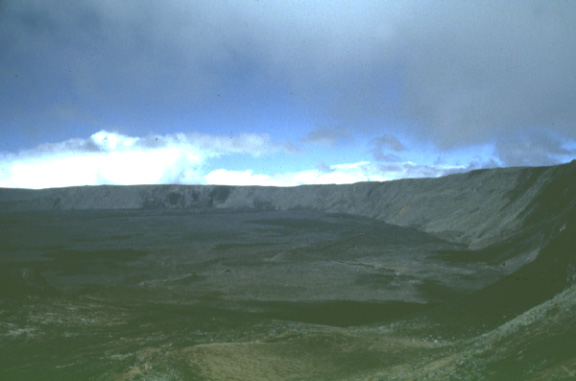|
Volcanism in the Galapagos Islands Galapagos Caldera's  | | The long and broad caldera of Volcan Darwin is characteristic of the Galapagos Volcanoes. Picture source: http://www.geo.cornell.edu/geology/GalapagosWWW/GalapagosGeology.html |
Another unusual characteristic of the western Galapagos volcanoes is the large size of their calderas, particularly in comparison to the size of the volcano. The presence of a caldera is responsible for the volcano's flat top. A caldera forms after large amounts of lava is ejected causing the volcano to collapse, due to lack of internal support from the now nearly or partially empty magma chamber. The Galapagos Islands are a good example of active, aging volcanoes because of their large calderas that illustrate a long succession of crater collapses. The most recent example of caldera collapse was in 1968 when the Fernandina volcano erupted explosively. The northern part of the 800-meter-deep caldera floor dropped an additional 350 meters. Sierra Negra, the oldest caldera of Isabela Island is 10 kilometers in diameter, while Fernandina, the youngest caldera in the Galapagos Islands has a diameter of 6.5 kilometers. Almost certainly, none of the calderas formed in a single event; instead they are the result of numerous episodes of collapse, as is evidenced by the uneven floors of some and benches on the walls of others. Once formed, caldera may boarden as parts of caldera wall collapse. This occured on Fernandina in 1988. Calderas may also occasionally fill entirely with lava, then reform. Marchena, in the northeast, has a caldera that has been very nearly filled with lava. The floor of Genovesa's caldera is below sea level and breached on the south sid, forming Darwin Bay.
|







